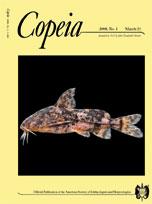Infectious diseases, including those caused by ranaviruses (family Iridoviridae), are among the suspected causes of global amphibian declines. Like many pathogens, ranaviruses appear to infect multiple species. We examined several North American amphibian ranavirus isolates to improve our understanding of the effects these viruses have on host communities. Our study had two objectives. The first was to characterize isolates from epizootics affecting wild amphibian populations and compare them to previously described isolates. The second was to test whether amphibian ranaviruses infect ecologically relevant heterologous species, and if so, document the outcome of exposure. The combined results of restriction endonuclease (RE) digestion analyses, sequence analyses, and experimental challenge trials suggest that two amphibian ranaviruses, Ambystoma tigrinum virus (ATV)-like viruses and Frog Virus 3 (FV3)-like viruses, are distinct viral species with different ecologies. Characterizations revealed that several isolates with identical major capsid protein (MCP) gene sequences have distinctive RE profiles. This suggests that high degrees of similarity in MCP sequences may belie important differences among isolates, and we argue it is imperative to characterize ranavirus isolates beyond sequencing the MCP gene. Results from experimental exposure trials indicate that multiple host species may be involved in the ecology of ATV- and FV3-like viruses, and that each virus is capable of infecting several amphibian species that share breeding habitats. Additionally, field collections revealed FV3-like ranaviruses circulating in Wood Frogs (Rana sylvatica) and ATV-like ranaviruses circulating in Tiger Salamanders (Ambystoma tigrinum diaboli) in the same week at a single breeding pond, highlighting the ecological potential for transmission among different host species. Our research also corroborates a growing body of knowledge that suggests individual host populations may differ in their responses to ranavirus infection, a finding with complex conservation implications. Ultimately, experiments elucidating the dynamics of intra- and inter-specific transmission will be particularly important for understanding the roles that ranaviruses play in their host communities and the threat they pose to amphibian populations.
How to translate text using browser tools
21 February 2008
Experimental Evidence that Amphibian Ranaviruses Are Multi-Host Pathogens
Danna M. Schock,
Trent K. Bollinger,
V. Gregory Chinchar,
James K. Jancovich,
James P. Collins
ACCESS THE FULL ARTICLE





